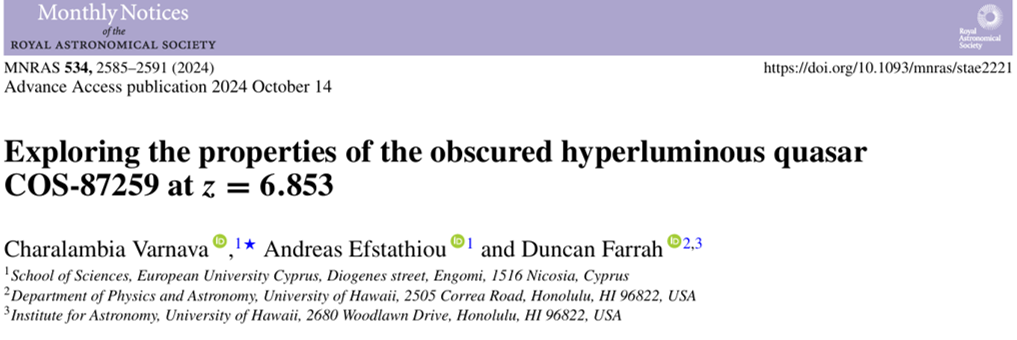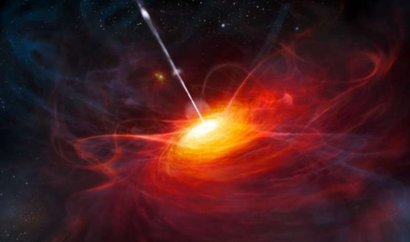“Exploring the properties of the obscured quasar COS-87259 at z=6.853”
Published in Monthly Notices of the Royal Astronomical Society
Posted on October 14, 2024
I am delighted to announce the publication of our research article “Exploring the properties of the obscured quasar COS-87259 at \(z\)=6.853” in Monthly Notices of the Royal Astronomical Society.

One of the most puzzling results in modern astrophysics is the presence of very massive supermassive black holes in the first billion years of the history of the Universe. In this article we explore the properties of COS-87259, a hyperluminous obscured quasar at \(z\)=6.853 (about 770 million years after the Big Bang) in the Cosmological Evolution Survey (COSMOS) field, which is the best studied extragalactic field. The discovery of this object in the tiny COSMOS field (1.5 square degrees) implies that the space density of objects like COS-87259 is about 20 times higher than that of unobscured quasars of similar luminosity. Our analysis of the spectral energy distribution of this object with SMART shows that its black hole mass is about two times higher than previous estimates, thus making it even more difficult to explain the presence of numerous and massive black holes so early in the history of the Universe. For further details, please read the article.

For this work we acknowledge support from the projects CYGNUS and CYGNUS+ funded by the European Space Agency.